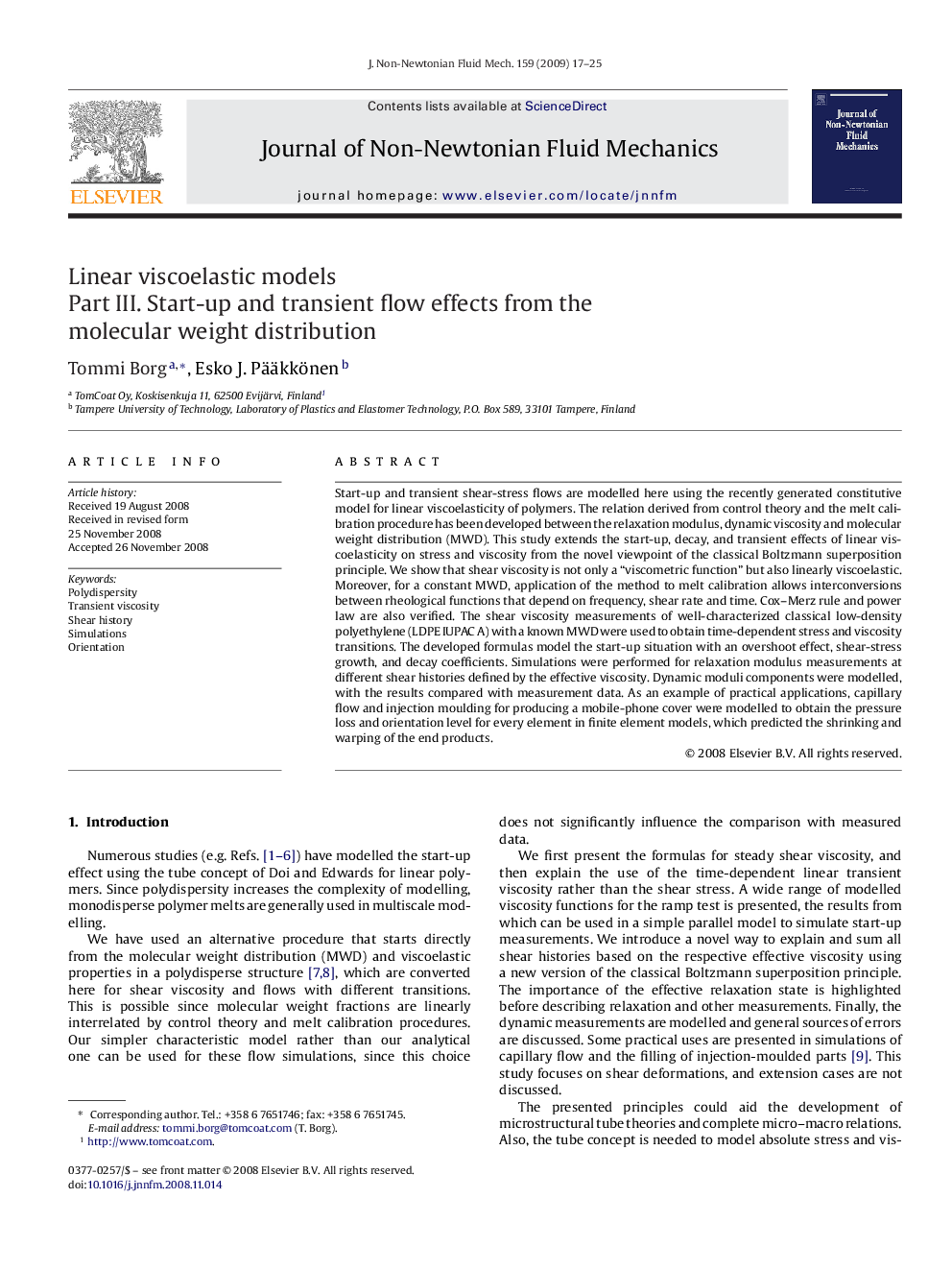| Article ID | Journal | Published Year | Pages | File Type |
|---|---|---|---|---|
| 671208 | Journal of Non-Newtonian Fluid Mechanics | 2009 | 9 Pages |
Start-up and transient shear-stress flows are modelled here using the recently generated constitutive model for linear viscoelasticity of polymers. The relation derived from control theory and the melt calibration procedure has been developed between the relaxation modulus, dynamic viscosity and molecular weight distribution (MWD). This study extends the start-up, decay, and transient effects of linear viscoelasticity on stress and viscosity from the novel viewpoint of the classical Boltzmann superposition principle. We show that shear viscosity is not only a “viscometric function” but also linearly viscoelastic. Moreover, for a constant MWD, application of the method to melt calibration allows interconversions between rheological functions that depend on frequency, shear rate and time. Cox–Merz rule and power law are also verified. The shear viscosity measurements of well-characterized classical low-density polyethylene (LDPE IUPAC A) with a known MWD were used to obtain time-dependent stress and viscosity transitions. The developed formulas model the start-up situation with an overshoot effect, shear-stress growth, and decay coefficients. Simulations were performed for relaxation modulus measurements at different shear histories defined by the effective viscosity. Dynamic moduli components were modelled, with the results compared with measurement data. As an example of practical applications, capillary flow and injection moulding for producing a mobile-phone cover were modelled to obtain the pressure loss and orientation level for every element in finite element models, which predicted the shrinking and warping of the end products.
